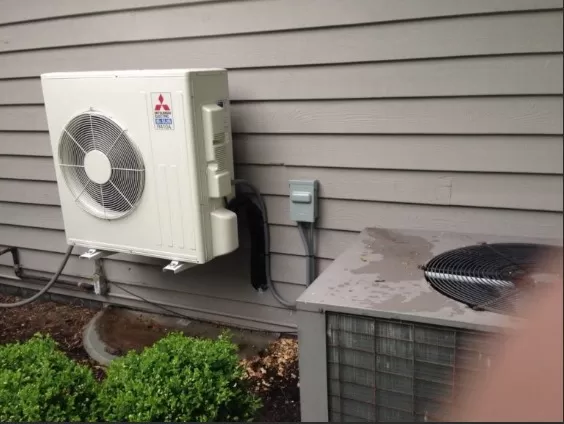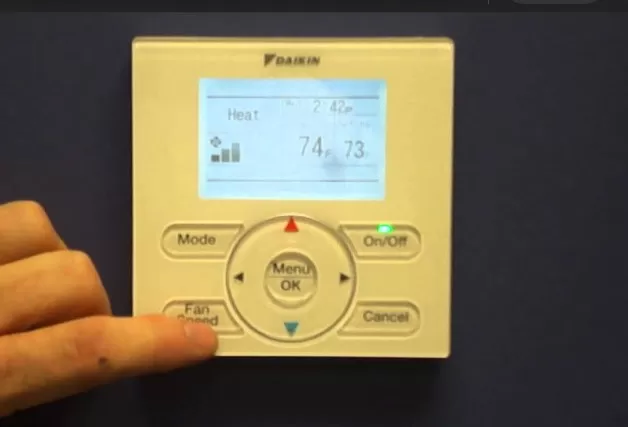Cooling Cost Culprits: Air Conditioning Mistakes to Avoid. Air conditioning has become an integral part of modern life, with over 90 percent of homes and nearly all businesses in America relying on it to combat the sweltering summer heat.
The staggering scale of air conditioner usage is evident in the fact that, according to the U.S. Department of Energy, these cooling systems consume approximately 6 percent of the country’s total electricity production. However, despite the widespread adoption of AC technology, many individuals mistakenly believe they are proficient in maintaining their systems, whether they are using central air, window units, or ductless mini-splits. Surprisingly, numerous homeowners unknowingly commit common mistakes that result in energy wastage, shorten the lifespan of their air conditioners, and ultimately lead to financial losses.
Purchasing an Inappropriate System: The Pitfalls of Choosing the Wrong Air Conditioner

It is crucial to select an air conditioner that is appropriately sized for your home to ensure optimal performance.
If you end up with an oversized unit, it will cycle on and off too frequently, resulting in an ineffective cooling process that fails to effectively remove humidity and maintain consistent temperatures. Conversely, opting for a unit that is too small will force it to run constantly, placing excessive strain on the system and significantly reducing its overall lifespan.
To determine the cooling capacity your home requires, it is advisable to conduct a thorough load calculation.
This calculation should take into consideration various factors, including the square footage of each room, the layout of the house, the level of insulation, the intended function of the rooms, and the typical occupancy. By considering these variables, you can accurately assess the cooling needs of your space and make an informed decision.
If you would like further guidance on conducting a load calculation, you can access a comprehensive worksheet specifically designed for this purpose on the Energy Star website.
Alternatively, seeking the assistance of an air-conditioning contractor will provide you with expert advice tailored to your specific circumstances.
Remember, investing time and effort in selecting the right air conditioner will pay off in the long run by ensuring efficient cooling, maintaining comfort, and prolonging the lifespan of your system.
Optimizing Energy Usage: Efficiently Cooling Unoccupied Rooms
To avoid unnecessary expenses and reduce energy waste, it is advisable to adopt a few strategies when it comes to cooling empty rooms.
One effective solution is to upgrade to a programmable thermostat. This advanced technology enables you to establish a predetermined schedule for adjusting the temperature of your air conditioning system. By programming the thermostat to raise or lower the temperature during periods when the rooms are unoccupied, you can achieve significant cost savings, potentially amounting to hundreds of dollars annually.
Furthermore, to enhance energy efficiency even further, consider closing the vents in unoccupied rooms.
By doing so, you can redirect the cooled air to the areas that are actively being used, ensuring that the air conditioning system operates optimally where it is most needed. Additionally, it is beneficial to keep closet and cabinet doors shut to prevent excess air from entering these spaces unnecessarily, as this can lead to additional cooling requirements.
By implementing these practices, you can minimize energy consumption and expenses associated with cooling empty rooms.
This approach not only contributes to environmental sustainability but also helps you save money while ensuring that your home remains comfortable in the areas where you actually need it.
Optimizing Energy Efficiency: Strategic Placement of Your AC Unit

While it may be tempting to conceal your air conditioning unit for aesthetic purposes, it is essential to consider its placement carefully, as this significantly affects its energy efficiency.
Instead of attempting to hide the unit in an inconvenient location, it is recommended to prioritize its functionality. By installing the AC unit in a shaded area on the east or north side of your house, you can minimize the strain on the system caused by excessive direct sunlight.
Direct sunlight exposure forces the air conditioner to work harder, as it absorbs more heat from the sun’s rays.
By choosing a shady spot, you can help the system operate more efficiently, reducing energy consumption and potentially extending the lifespan of the unit.
It is also important to avoid placing concealing shrubs or plants too close to the AC unit.
While the intention may be to create visual camouflage, these obstructions can impede proper ventilation and hinder the airflow around the system. Additionally, they may accumulate debris and obstruct the condenser coils, leading to reduced performance and potential damage.
Ensuring adequate space around the unit promotes optimal airflow and allows for easy maintenance and cleaning.
By prioritizing the strategic placement of your air conditioning unit and avoiding excessive sunlight exposure as well as obstructions, you can enhance its energy efficiency, prolong its lifespan, and maintain its optimal functionality.
It’s worth considering these factors for the overall effectiveness and longevity of your cooling system.
Optimizing Temperature Control: Correct Placement of Thermostat and Vents
When it comes to maintaining optimal comfort and energy efficiency inside your home, it is crucial to ensure that the thermostat and vents are positioned correctly.
By following a few key guidelines, you can avoid potential issues that may lead to inaccurate temperature readings and hindered air circulation.
Firstly, it is essential to avoid placing the thermostat in direct sunlight or near heat-producing lights and appliances.
Exposure to direct sunlight or proximity to heat sources can cause the thermostat to register higher temperatures than the actual Ambient conditions, leading to inaccurate readings. As a result, the air conditioner may run longer than necessary, wasting energy and potentially impacting your comfort.
To prevent this, choose a location for the thermostat that is away from direct sunlight and insulated from heat sources, allowing it to accurately gauge the temperature of your living space.
In addition to the thermostat, it is important to ensure that the interior vents remain unobstructed.
Placing furniture or curtains in front of the vents can impede the proper flow of conditioned air throughout the room. This obstruction disrupts the desired air circulation and can lead to uneven cooling or heating.
To promote efficient airflow, arrange your furniture in a way that allows air to flow freely from the vents, and avoid blocking the vents with curtains or other objects.
By correctly positioning the thermostat and keeping the vents unobstructed, you can maintain accurate temperature control, prevent unnecessary energy consumption, and ensure proper air circulation throughout your home.
These simple adjustments contribute to a more comfortable and energy-efficient living environment.
Optimizing Energy Savings: Avoiding Excessively Low Thermostat Settings

.
It is common for homeowners to have a preference for cooler indoor temperatures, but often, thermostat settings are unnecessarily set lower than actually needed.
By adjusting your thermostat to a higher temperature, you can achieve substantial savings on your utility bills while still maintaining a comfortable living environment. In fact, for every degree you raise the temperature, you can potentially reduce your air conditioning costs by around 3 percent.
While habit may lead you to set the thermostat lower than necessary, it is important to consider the financial and environmental implications of this practice.
By gradually acclimating to slightly higher temperatures, such as in the high 70s, you can significantly reduce your cooling expenses without sacrificing comfort.
Raising the thermostat temperature conserves energy because your air conditioner will run for shorter periods and consume less electricity.
This adjustment also puts less strain on the system, potentially extending its lifespan and reducing maintenance costs.
It is worth noting that personal preferences for temperature may vary, and finding the ideal balance between comfort and energy savings is essential.
Experiment with gradually increasing the thermostat setting and observe the impact on your comfort level and utility bills. You may find that a slightly higher temperature can still keep you comfortable while yielding substantial savings over time.
By avoiding excessively low thermostat settings and embracing a more energy-conscious approach, you can enjoy significant cost savings, reduce your environmental footprint, and contribute to a more sustainable future.
*The information is for reference only.